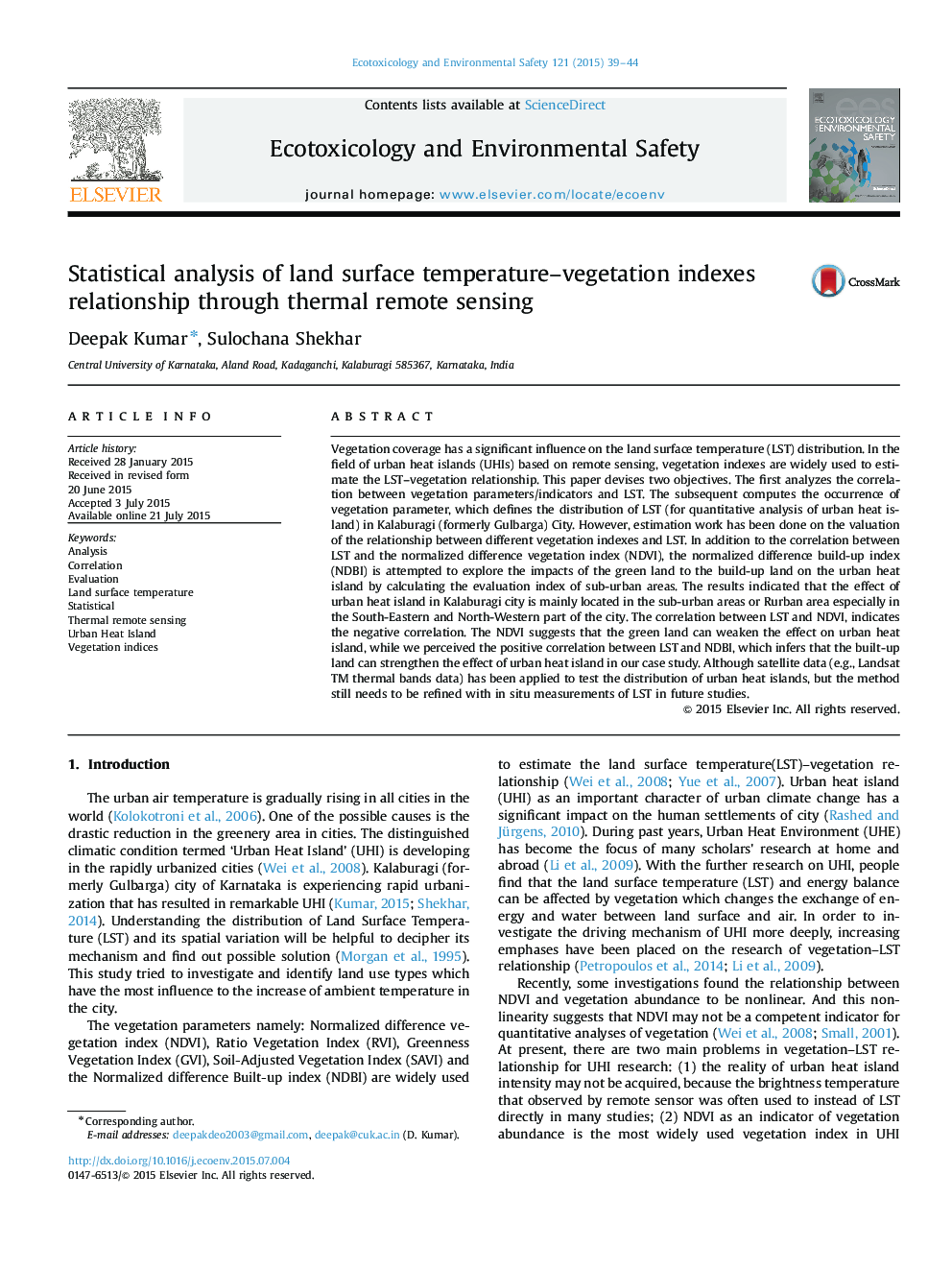| کد مقاله | کد نشریه | سال انتشار | مقاله انگلیسی | نسخه تمام متن |
|---|---|---|---|---|
| 4419289 | 1618942 | 2015 | 6 صفحه PDF | دانلود رایگان |
The obvious inverse correlation between the vegetation index (NDVI) with respect to the surface radiation temperature in the spatial domain at local level was established.The thermal island intensity of core regions of the city are higher than other regions due to the positive correlation trends between NDBI and LST.The water body and the green space have edge effect influence to the ambient temperature, therefore plays remarkable influence to the urban thermal island intensity.
Vegetation coverage has a significant influence on the land surface temperature (LST) distribution. In the field of urban heat islands (UHIs) based on remote sensing, vegetation indexes are widely used to estimate the LST–vegetation relationship. This paper devises two objectives. The first analyzes the correlation between vegetation parameters/indicators and LST. The subsequent computes the occurrence of vegetation parameter, which defines the distribution of LST (for quantitative analysis of urban heat island) in Kalaburagi (formerly Gulbarga) City. However, estimation work has been done on the valuation of the relationship between different vegetation indexes and LST. In addition to the correlation between LST and the normalized difference vegetation index (NDVI), the normalized difference build-up index (NDBI) is attempted to explore the impacts of the green land to the build-up land on the urban heat island by calculating the evaluation index of sub-urban areas. The results indicated that the effect of urban heat island in Kalaburagi city is mainly located in the sub-urban areas or Rurban area especially in the South-Eastern and North-Western part of the city. The correlation between LST and NDVI, indicates the negative correlation. The NDVI suggests that the green land can weaken the effect on urban heat island, while we perceived the positive correlation between LST and NDBI, which infers that the built-up land can strengthen the effect of urban heat island in our case study. Although satellite data (e.g., Landsat TM thermal bands data) has been applied to test the distribution of urban heat islands, but the method still needs to be refined with in situ measurements of LST in future studies.
Journal: Ecotoxicology and Environmental Safety - Volume 121, November 2015, Pages 39–44
